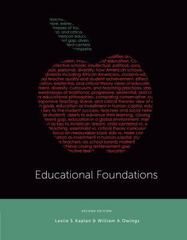Question
1.) 1. In a perpetual inventory system, transportation charges are recorded with a debit to the merchandise inventory account. 2. An income statement in which
1.) 1. In a perpetual inventory system, transportation charges are recorded with a debit to the merchandise inventory account. 2. An income statement in which the details of the cost of goods sold are shown is called a single-step income statement.
1st statement is false
1st statement is true
both statements are false
both statements are true
2.) a merchandiser will earn an operating income exactly zero when
operating expenses equals net sales
gross margin equals operating expenses
net sales equals cost of goods sold
cost of goods sold equals gross margin
3.) 1. sales returns and allowances is described as a contra revenue account 2. for a merchandising entity, the difference between net sales and operating expenses is called gross margin.
both statements are true
both statements are false
1st statement is true
1st statement is false
4.) 1. there is no need for physical inventory count in the perpetual system 2. the perpetual inventory system requires recording the cost of each sale as it occurs
1st statement is true
1st statement is false
both statements are true
both statements are false
5.) Under the periodic inventory system, the Purchases account is used to record
only purchases of merchandise inventory on account
purchases of merchandise inventory for cash or on account
purchases of any asset on account or note payable
only cash purchases of merchandise inventory
6.) Which of the following is shown on both a multiple-step and a single-step income statement?
other expenses & losses
net sales
income from operations
gross profit
7.) after all the adjusting entries are posted, the balances of all asset, liability, income and expense accounts correspond exactly to the amounts in the
unadjusted trial balance
trial balance of balances
post closing trial balance
financial statements
8.) the basic differences between the FS of merchandising and service entity include COGS section of the Income statement and the
other income section of the income statement
inclusion of merchandise inventory on the BS as a current asset
equity section of the balance sheet
profit figure
9.) 1. The bill of lading is a document prepared by the seller detailing the terms of delivery 2. the sales invoice is the evidence for credit sales and purchases.
1st statement is true
1st statement is false
both statements are true
both statements are false
10.) 1. the balance of the merchandise inventory account at the beginning of the period represents the cost of the merchandise on hand at that time 2. the ending inventory of one period is the beginning inventory of the next period
both statements are true
1st statement is false
both statements are false
1st statement is true
Step by Step Solution
There are 3 Steps involved in it
Step: 1

Get Instant Access to Expert-Tailored Solutions
See step-by-step solutions with expert insights and AI powered tools for academic success
Step: 2

Step: 3

Ace Your Homework with AI
Get the answers you need in no time with our AI-driven, step-by-step assistance
Get Started


